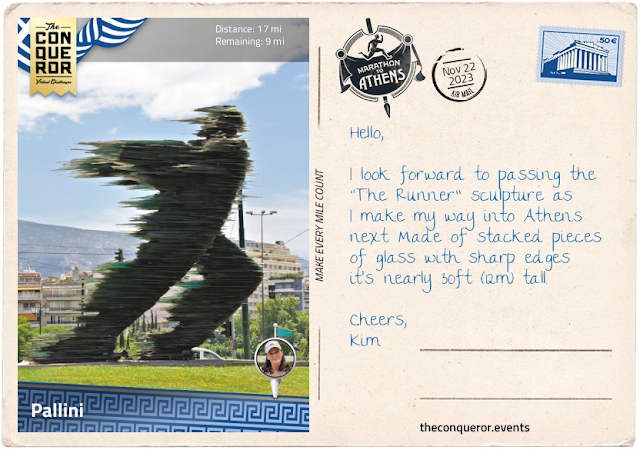I continued southbound through the town of Nea Makri, known for its coastline and beaches and the village of Mati, a popular tourist destination with ferry access to explore nearby islands.
The route takes a southwest direction to Pikermi. The town has a paleontological site where 40 mammal species from the late Miocene era, about 8 million years ago, were discovered. The site was initially discovered by accident by Scottish historian, George Finley, in 1836 whilst he was looking for the remains of a temple. Three years later during excavations, a Bavarian soldier came across calcite crystals thinking they were diamonds. He handed the specimens over to zoologist Andreas Wagner in Munich who disproved the specimens as diamonds but instead recognised it as the maxilla (upper jaw) of a primate which was classified as the first primate specimen to ever be discovered. Fieldwork followed with many more discoveries until the early 1900s when it stopped for about 50 years. In the 1970s activity resumed for the next decade before stopping again for another 28 years. Activity began again when new sites were discovered in the Pikermi Valley. Since 2009, annual excavations have unearthed more than 2,000 specimens including mammals such as the hipparions, the three-toed horses that roamed the earth during the Miocene period.
Heading west, I arrived at the suburban town of Pallini. It is located in a plain between the mountains of Penteliko to the north and Hymettus to the south. The mountain elevations are between 3,300-3,600ft (1,000-1,100m).
Hymettus was an excavation site in the early 20th century where three structures were found. The larger one was identified as an altar. Several shards with inscriptions dedicated to Zeus were also found. It was hypothesized that the structure was a sanctuary of Zeus Ombrios (meaning Showery Zeus) where agricultural people would make offerings in favour of rain, especially during severe droughts. The first writings about the existence of the altar was by Pausanias, a 2nd century geographer who wrote about ancient Greece. His writings were supported by the excavation site where besides the inscribed shards, complete potteries and vessels that were used as offerings were also discovered in a hollowed area near the altar. It seemed that periodically the offerings were gathered from the altar to make space for new offerings and dumped into a nearby hole. These discoveries have given archaeologists a wealth of information who were able to deduce that the sanctuary was used for several centuries with the 7thC BC being the busiest period.
Mount Penteliko is fully surrounded by houses and two-thirds covered by forestry. What Penteliko is widely known for is its high-quality marble which was used for several structures in Athens, ie the Acropolis and Panathenaic Stadium. After a while the marble was exported to Rome for many of their ancient structures and sculptures. Today the ancient marble quarry is protected by law and only used for the restoration of the Acropolis.
The marathon course began an uphill climb from Nea Makri at around the 13th mile (21km), then continued uphill through Pikermi and Pallini. Building up an appetite with all the uphill work into Pallini I settled in at a tavern for a mini feast. Starting with a mixed olives appetiser and bread for dipping in olive oil, I moved onto a small fish, grilled whole, drizzled with lemon and oil dressing accompanied by a tomato salad with onions, green peppers, feta and olives and a side dish of herbed roasted potatoes cut into wedges. I finished with a slice of Karythopita, a spiced walnut cake.










No comments:
Post a Comment
It's so good to see you here . . .